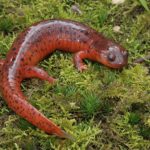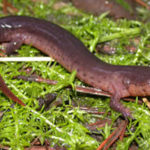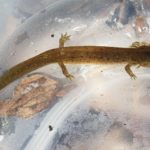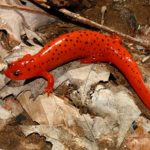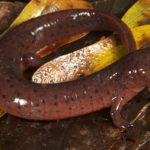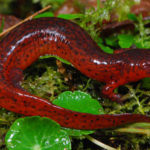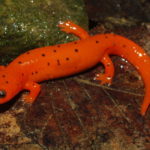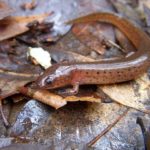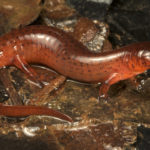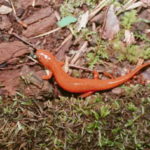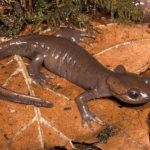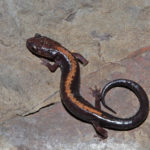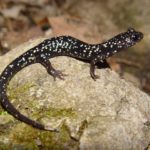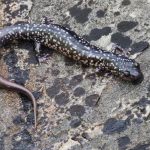Home > Salamanders > Mud Salamander
Mud Salamander
Mud salamander is a species of salamander belonging to the family Plethodontidae, native to southeastern United States. The species is known to burrow in close vicinity of water as it builds underground passages and underwater tunnels.
| Kingdom | Animalia |
| Phylum | Chordata |
| Class | Amphibia |
| Order | Urodela |
| Family | Plethodontidae |
| Genus | Pseudotriton |
| Scientific Name | Pseudotriton montanus |
| Other Names | Mountain triton |
| Size | 3 to 8 in (7.6 to 20 cm) |
| Color | Reddish-brown with round black spots or uneven patches on the upper surface |
| Distribution | Southern New York, northern Florida, Kentucky, Tennessee (United States) |
| Habitat | Swamps, bogs, springs, seeps, and streams with muddy bottom and clean and clear water |
| Diet | Earthworms, beetles, mites, spiders, other smaller salamanders |
| Predators | Snakes |
| Breeding Season | Warmer months of the year |
| Mode of Reproduction | Oviparous (egg laying) |
| Clutch Size | 65 to 200 eggs |
| Incubation Period | 3 months |
| Reproductive Age | Males: 2.5 years Females: 4 to 5 years |
| Average Lifespan | 15.1 years in captivity |
| IUCN Conservation Status | Least Concern |
Mud Salamander Pictures Gallery
- Images of Mud Salamander
- Mud Salamander Images
- Mud Salamander Larvae
- Mud Salamander Photos
- Mud Salamander Pictures
- Mud Salamander
- Mud Salamanders
- Photos of Mud Salamander
- Pictures of Mud Salamander
- Pseudotriton Montanus
Published on March 13th 2017 by staff under Salamanders. Article was last reviewed on 30th September 2019.
